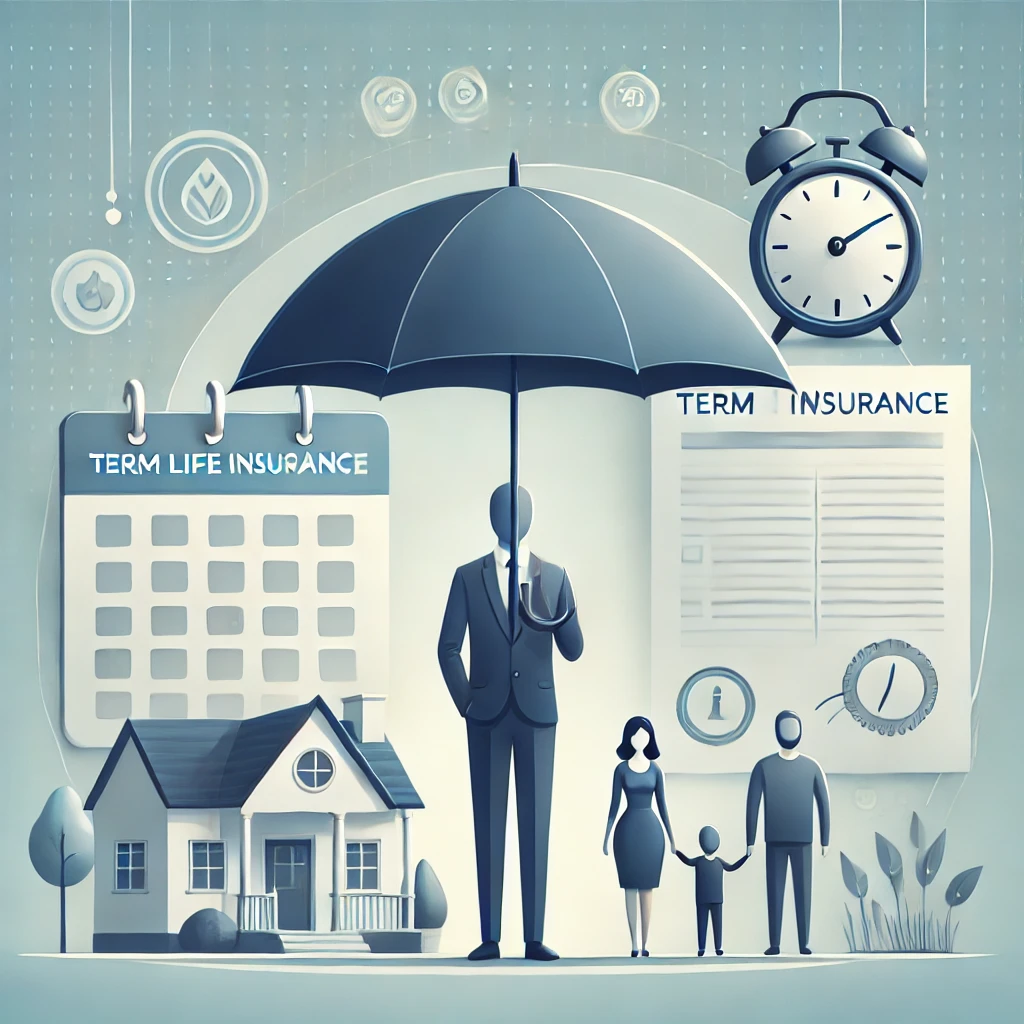Uncategorized
Term Life Insurance: Temporary Protection for Financial Security

Term Life Insurance is a type of life insurance that provides coverage for a specific period or “term,” such as 10, 20, or 30 years. If the policyholder dies during the term, the beneficiaries receive a death benefit (a lump sum of money). If the policyholder survives the term, the coverage ends, and no payout is made unless the policy is renewed or converted to a permanent policy.
Key Features of Term Life Insurance:
- Fixed Term: Coverage lasts for a set number of years, typically 10, 15, 20, or 30 years.
- Death Benefit: If the policyholder dies within the term, the insurer pays the beneficiaries the agreed-upon amount (e.g., $250,000).
- No Cash Value: Unlike whole life insurance, term life does not build cash value over time; it is purely for protection.
- Lower Premiums: Term life is generally much more affordable than permanent life insurance because it only provides temporary coverage.
- Renewal: Some policies allow for renewal after the term ends, though premiums may increase with age.
- Conversion Option: Many policies offer the option to convert to a whole life or permanent policy before the term ends, without needing to undergo a new medical exam.
Types of Term Life Insurance:
- Level Term: The death benefit and premiums remain the same throughout the policy term.
- Decreasing Term: The death benefit decreases over time, often used to cover decreasing financial obligations like a mortgage.
- Renewable Term: Allows you to renew the policy after the term expires, typically at a higher premium.
- Convertible Term: Gives the option to convert to permanent life insurance without a medical exam.
Pros:
- Affordability: Low initial cost compared to whole life insurance.
- Simplicity: Straightforward death benefit without investment components.
- Flexible Terms: You can choose coverage for a specific time period based on your needs (e.g., until children are grown or mortgage is paid off).
Cons:
- No Cash Value: There’s no savings or investment component; the policy has no value unless you die within the term.
- Higher Renewal Costs: Premiums can become more expensive if you renew after the initial term, especially as you age.
- Coverage Expires: If you outlive the policy, you receive no benefit unless you renew or convert.
Who Is Term Life Insurance Best For?
- Individuals who need temporary coverage (e.g., until children are independent or a mortgage is paid off).
- People looking for the most affordable way to get life insurance coverage.
- Those who don’t need the investment or savings components of permanent insurance.
Would you like to explore how to choose the right term length or compare term life with other life insurance types?